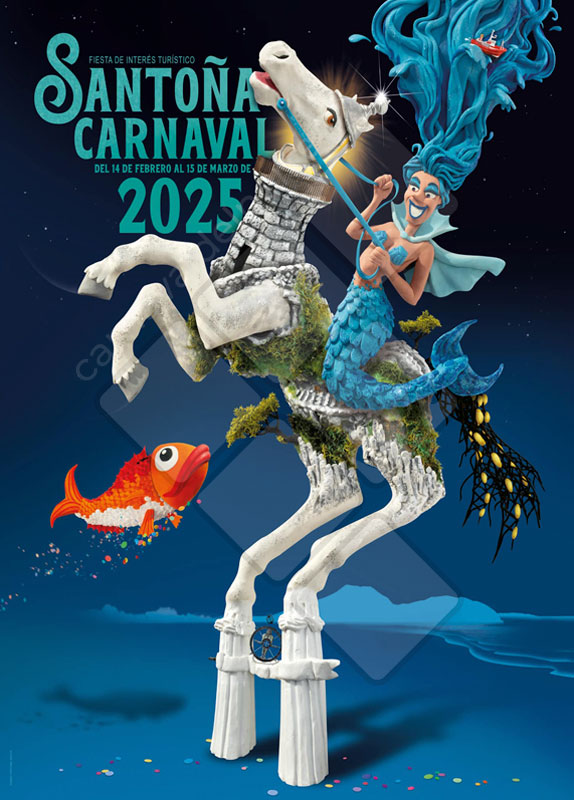 |
In 1980, the associations of Santoña tried to revive the town’s Carnival, but due to fear, caution, and other circumstances of the time, the much-anticipated event could not be held. Spain had just emerged from a long dictatorship, and although democracy was already in place, it was not yet fully settled, and fear persisted in various sectors of society, including the political class.
However, in 1981, the associations of Santoña, together with the Town Hall, decided to take a step forward. With great caution, they organized the first Santoña Carnival. After numerous meetings between the associations and the Town Hall, as well as with their partners, the people of Santoña were called to take to the streets and enjoy the Carnival, a tradition with deep historical roots in the town, as evidenced by old newspapers.
|
| "Santoña Reclaims the carnival"
And so it was announced by Diario Montañés in a news article by Francisco Sánchez Arenado on February 14, 1981, which stated:
"A report from the Tourism and Festivities Committee regarding the organization of the Carnival was presented at the last session of this Town Hall's plenary. It was announced that on the 28th of this month, the 1981 Carnival will take place, a celebration that will be carried out with the collaboration of local clubs, 'Los Ronceros,' 'Zarceta,' 'Vinikis,' and the 'El Nazareno' brotherhood.
It is no surprise that these festivities can be held, given the well-known diligence of these clubs in organizing all kinds of events throughout the town.
Thus, the Santoña Carnival is once again reborn... (to be completed)
These Carnivals were famous, and it seems they are to be remembered through this collaboration of the renowned clubs, guaranteeing in advance the success that the Carnival once had in Santoña."
|
 |
In the days leading up to the celebration of the 1981 Santoña Carnival, more details were becoming known, and Sánchez Arenado himself shared them in Diario Montañés on February 20 of that same year:
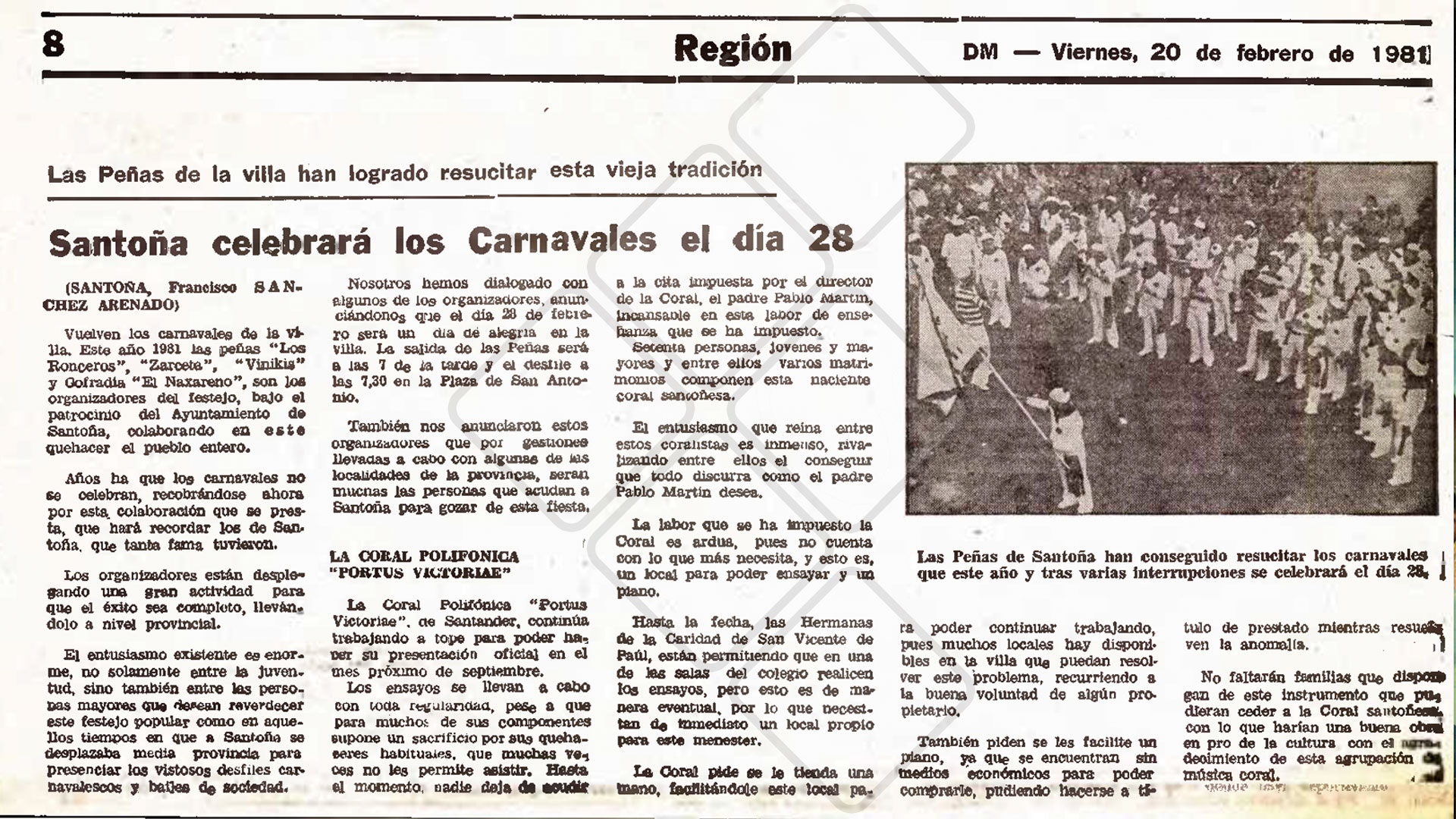 |
"Santoña will celebrate the Carnival on the 28th"
The town’s Carnivals return. This year, the clubs "Los Ronceros," "Zarceta," "Vinikis," and the "El Nazareno" brotherhood are the organizers of the event, under the sponsorship of the Santoña Town Hall, with the entire town collaborating in this effort.
It has been many years since the Carnivals were last celebrated, and they are now being revived through this collaboration, which will bring back memories of Santoña’s Carnivals, which were so renowned.
The organizers are putting in great effort to ensure the success of the event, elevating it to a provincial level.
There is enthusiasm not only among the youth but also among older people, who wish to relive this popular celebration as in the days when half the province would come to Santoña to witness the colorful Carnival parades.
|
and social dances. We spoke with some of the organizers, who informed us that February 28 will be a day of joy in the town. The clubs will set out at 7 PM from the Plaza de San Antonio.
These organizers also announced that, through arrangements made with some of the towns in the province, many people will come to Santoña to enjoy this celebration.
The impact of the Carnival’s revival in Santoña was such that the newspaper La Hoja del Lunes published an article on February 23, 1981, which headlined: "Next year, the carnival will return to Cantabria," and noted that Antonio Montesinos discovered Domingo Larrañaga in Santoña, the author of a thousand marine Carnival murgas. Delving deeper into the news, we can read:
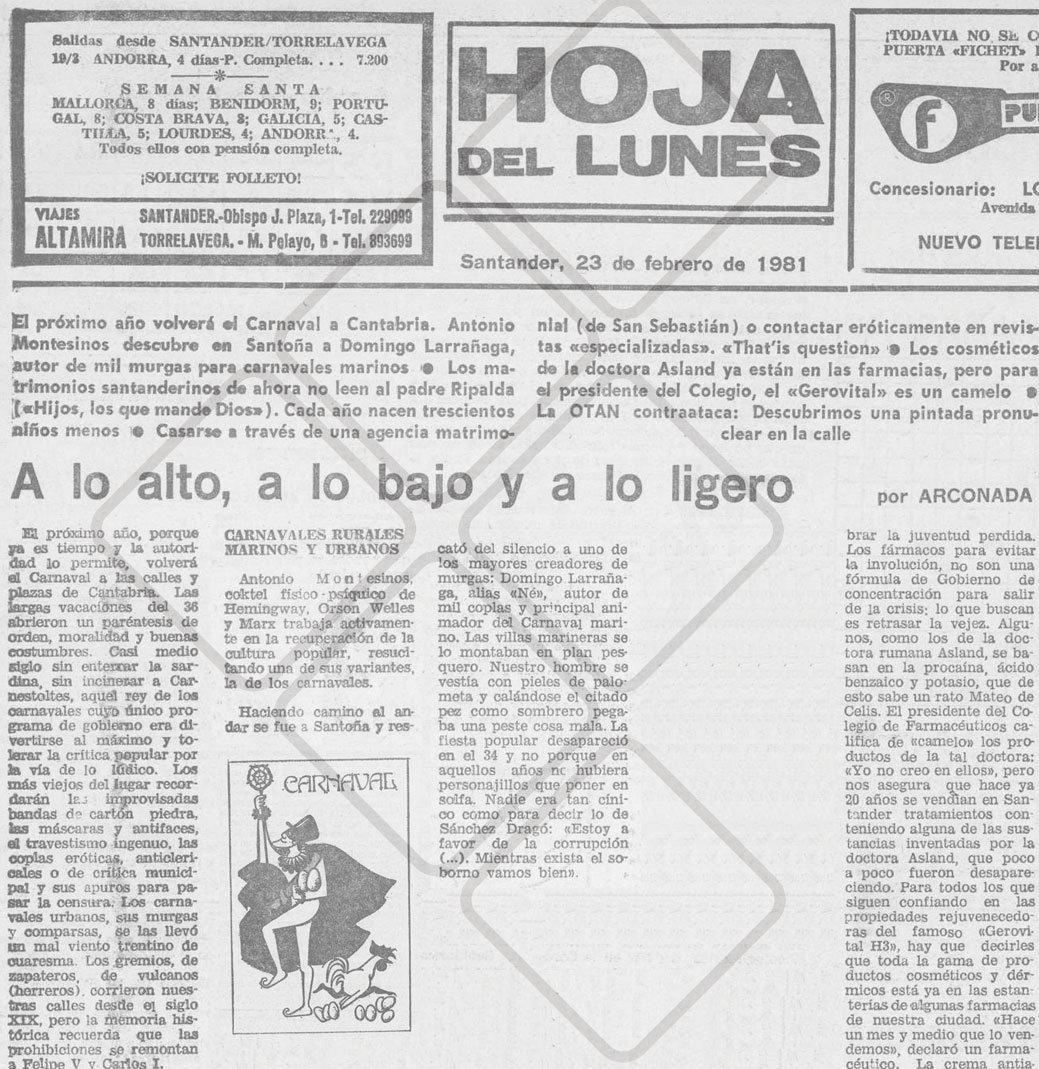 |
"Rural, Marine, and Urban Carnivals"
"...Making his way, he went to Santoña and rescued from silence one of the greatest creators of murgas: Domingo Larrañaga, alias 'ÑE,' author of a thousand couplets and the main entertainer of the marine Carnival. The Coastal Towns held their celebrations in a fishing style.
Our man would dress in palometa skins and wear the aforementioned fish as a hat, which created a terrible stench.
The popular festival disappeared in '34, and not because there weren’t any characters to ridicule at that time."
|
And the long-awaited day arrived, February 28, 1981, when the clubs, associations, and the general public took to the streets with uncertainty about where they were going, what was happening, or simply what they had to do.
The day began with a news article by the correspondent in the area, Francisco Sánchez Arenado, appearing in Diario Montañés:
|
"Today the Carnival Festivities Begin"
"...As we have been announcing, today, Saturday, February 28, 1981, the Carnivals organized by the clubs of Santoña will be celebrated, which have competed in this effort to ensure that the festivities have all the splendor that the organizers, supported by the Santoña Town Hall, aim for.
It truly was unexpected that the Carnival celebration would be embraced with such enthusiasm, as it is said that thousands of people will take to the streets in their colorful costumes, and that numerous 'groups' from the province will come to enjoy the Carnival of the fishing town, which, like in times of old, is set to be extraordinary....."
"...The Carnivals of Santoña have always been famous, and many in the town remember those famous Carnivals of yesteryear, so well-known throughout the province..."
|
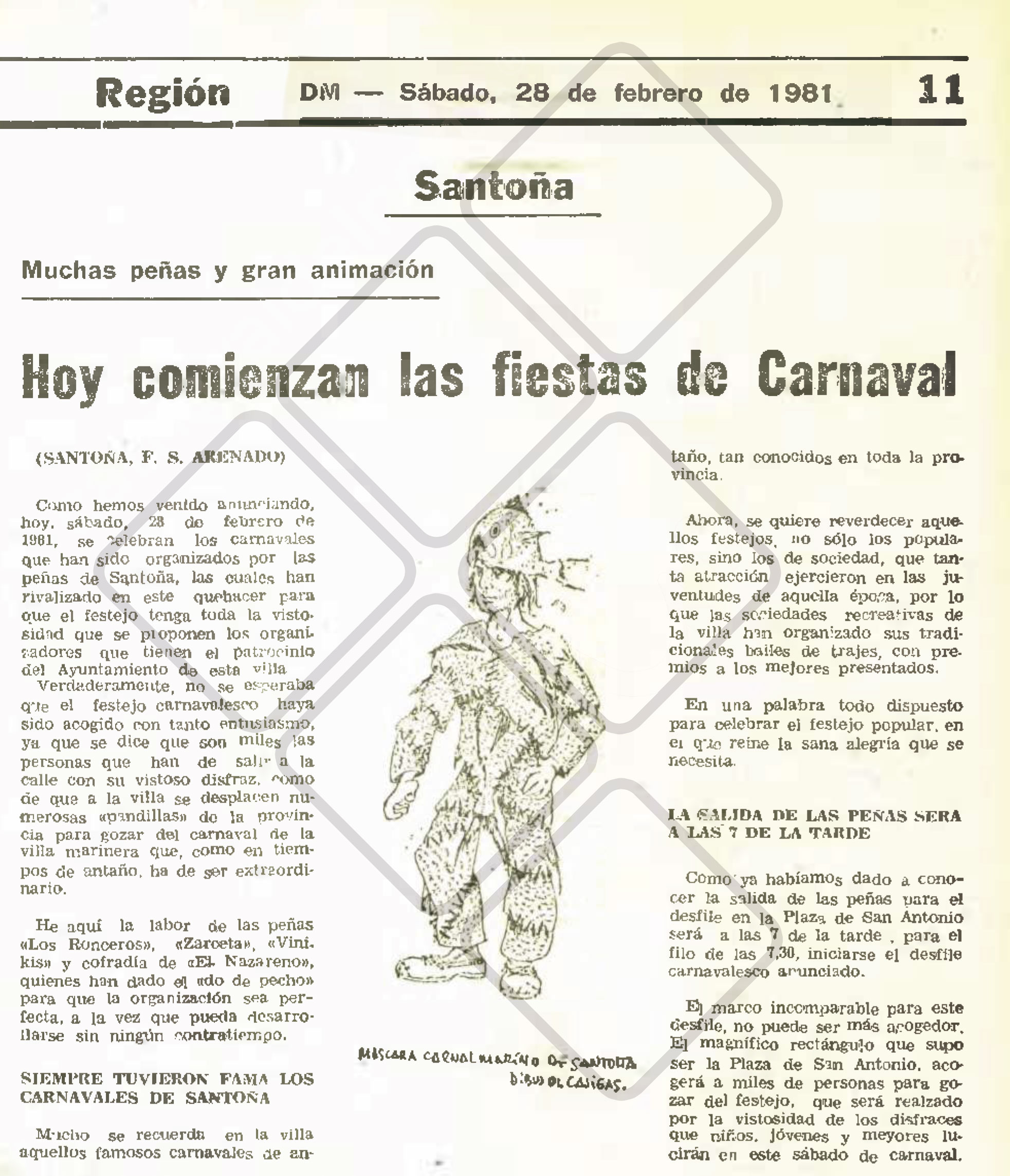 |
As had been announced, at 7 PM, people began to gather around the Plaza de San Antonio, without any kind of organization, wandering around the mentioned square. Several thousand people congregated there, and, without realizing it, the Santoña Carnival was resurfacing—one that had been hidden for many years due to war and dictatorship but had always endured in the memory of all Santoñeses.
A new page was being written in the history of the Carnivals of Santoña.
And on Sunday, after the celebration of Carnival Saturday, we woke up to a supplement in the Montañés newspaper, which, thanks to the revival of the Santoña Carnival, prompted a recollection of how those old carnivals were, not only in Santoña but throughout the Cantabria region.
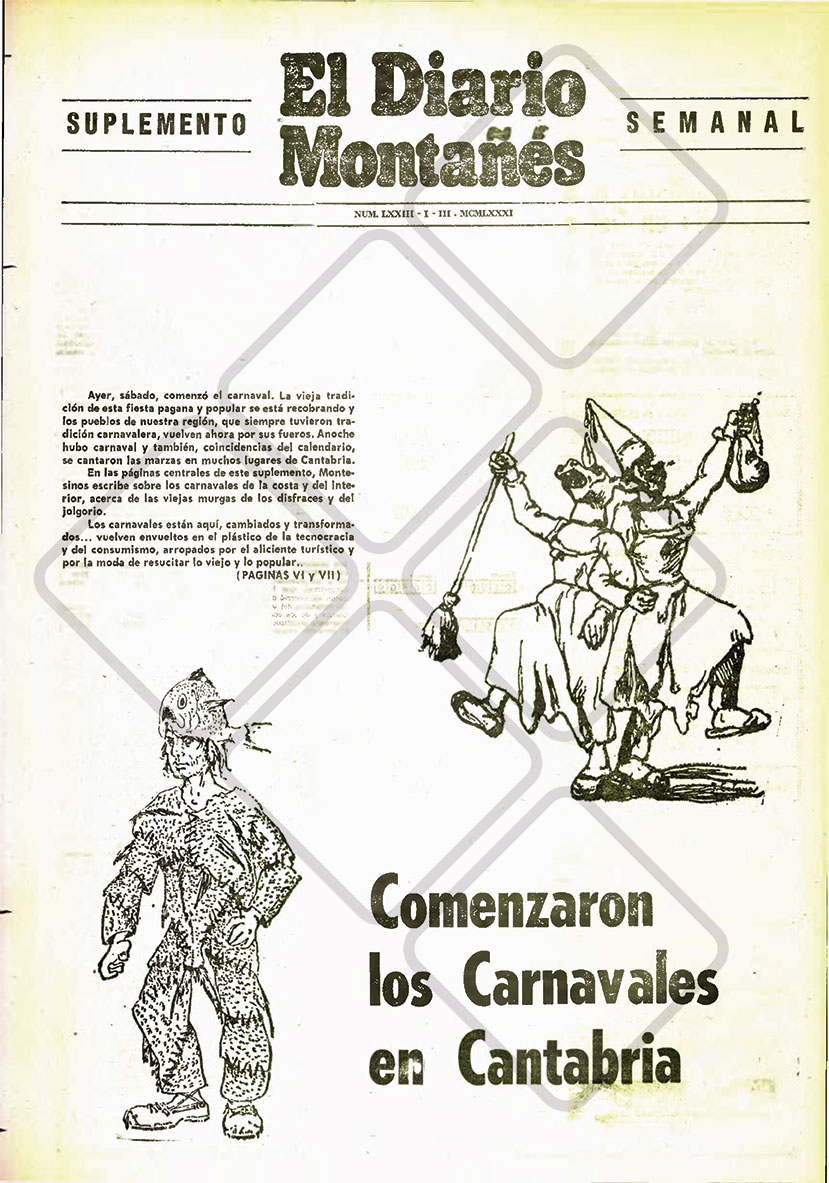 |
"...Yesterday, Saturday, the carnival began. The old tradition of a pagan and popular festival is being revived, and the towns of our region, which always had a carnival tradition, are now reclaiming their heritage....."
In the inside pages of the supplement, A. Montesinos goes on to detail the typical carnivals that existed in Cantabria, and among them, of course, is the one in Santoña, with the following article about the seafaring carnival of Santoña.
"The Santoña "Murga," A Maritime Carnival"
J. Haya, in his study of the Santoña "murga" Los Parrandistas, explains that what is known inland as a "comparsa" is called a "murga" in Santoña.
|
|
The last "murga" known in the seafaring town dates back to 1934, led by the well-known Domingo Larrañaga, alias "Ñe." We had the chance to talk with him, witnessing his extraordinary memory and a clear longing for the carnivals.
The local young people would gather at "La Gloria," a venue by the dock, where they rehearsed the "murga." The most well-known and highest-quality performance was The Trial at the Bottom of the Sea (depicting a trial between marine species). It was written by "El Litri," who was then the town hall secretary, with music by Vinatea, the director of the Municipal Music Band. The instruments were made of cardboard with cigarette papers, the bass drum was a "tabal" (a box) of herring.
The costume is noteworthy and of great visual richness. It involves covering the body with fish skins sewn together, specifically from the pompano, and wearing a pompano fish on the head (see drawing) or a "cofre" (a seabird similar to a seagull).
|
 |
Since the skins were not yet tanned, they gave off a foul odor, which became part of the festivities, scaring away people who approached the "murga," causing laughter and commotion.
Los Parrandistas consisted of 13 men and three women (without costumes) who sold the songs, previously censored by the authorities, and most of the time, they were sung however they pleased, without fear or restraint.
In the Madrid Hall, dances were organized for Piñata Sunday, and the carnival was bid farewell at night with a lavish dinner and pasodobles.



